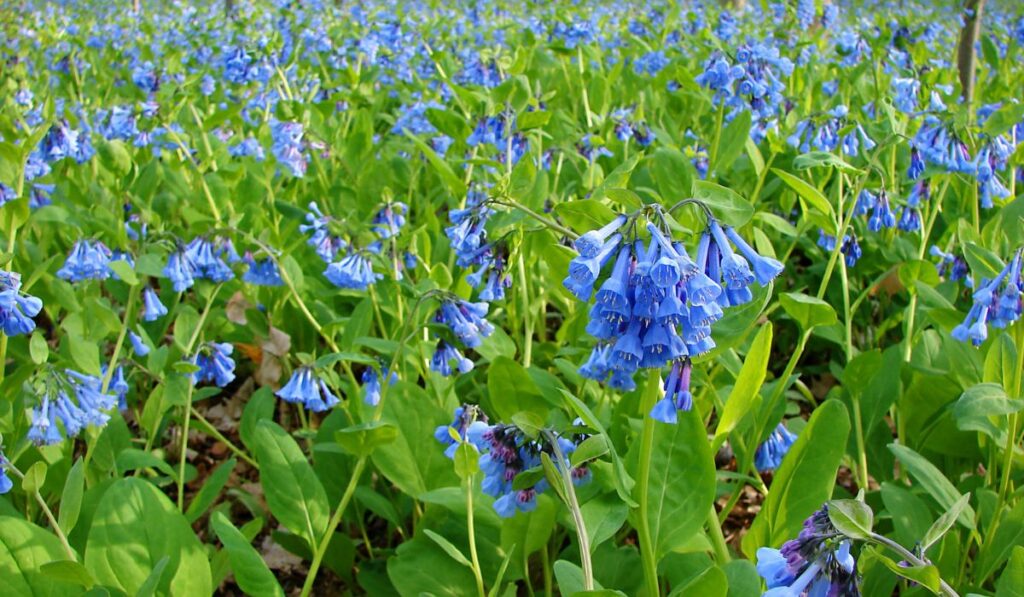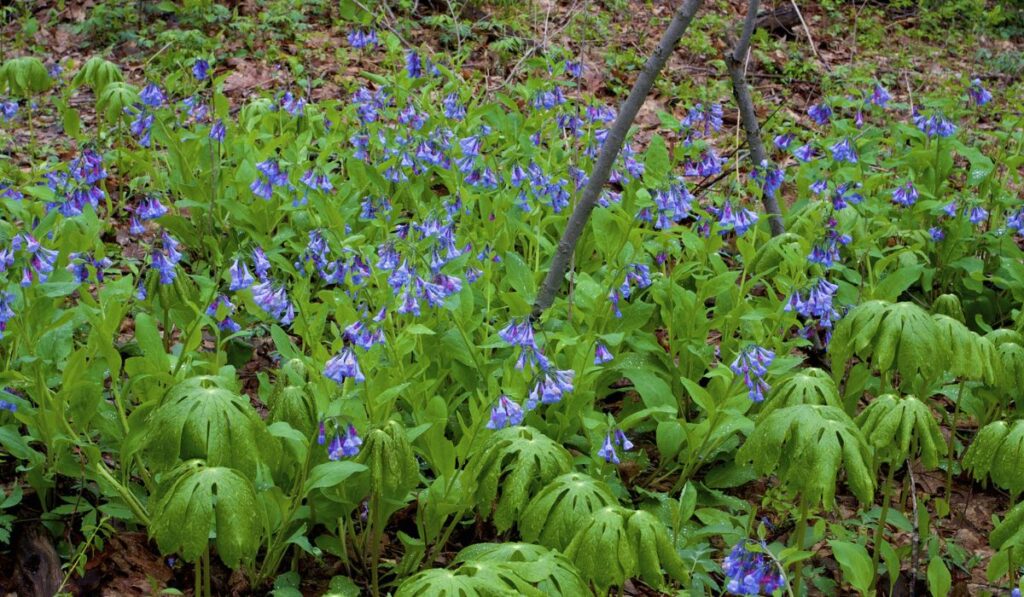The Virginia bluebell is an ephemeral plant native to eastern North America. It comes in a wide range of blue shades and can easily enhance the look of any garden. But how difficult is it to plant Virginia bluebells, and what should you consider before you give it a try?
Virginia bluebells have a short lifespan and grow well in spring. They thrive in shady, moist places with a cool climate, and they don’t need excessive care or fertilizers. However, they’re sensitive to transplanting, and they grow best through self-seeding and rhizomes.
Let’s take a closer look at Virginia bluebells, including how to grow them properly and how to protect them from pests and diseases.
Which Season Is Best for Virginia Bluebells?

In most regions, Virginia bluebells grow only in spring. You should plant them in early spring in a damp and shady place. Depending on where you live, you can also plant them in late fall, and they’ll blossom when spring starts.
If you live in a colder region, you can plant the seedlings in mid to late spring, after the last frost. If you live in a tropical or warmer climate, plant the seedlings in early winter since they’ll easily wither and die if the temperature becomes too hot.
Keep the soil moist but well-drained, and make sure that it’s not clay or sandy.
It’s often hard to grow Virginia bluebells using the seeds. It’s much easier to take a root bulb to plant for the next season. You can take the root bulbs after they divide between the last summer or early fall, but avoid damaging the plant’s roots.
Alternatively, you can keep the seeds (on Amazon) indoors in your refrigerator during this period if you live in a warmer area.
Make sure to check the pH and fertility level of the soil if you choose to keep the seeds indoors. Adjust the soil by adding fertilizers or vermiculite (on Amazon) as needed. Cover the container with plastic and keep it in the fridge for 2 months.
When spring comes, take the container out and plant it in your garden. Keep the soil moist and make sure the area has good drainage.
Virginia bluebells bloom mid-spring and go dormant early in the summer. After they go dormant, mulch the soil to keep it moist and nutrient-rich.
Do Virginia Bluebells Need Full or Partial Sun?
Virginia bluebells can’t handle too much direct sunlight, especially when the temperature is high. Always plant them in a shaded area or one with partial sunlight. Cool sunlight, like that in the morning and evening, isn’t harmful either.
If they’re exposed to more sunlight, water the plants more regularly.
Plant Virginia bluebells in flower beds, along sidewalks, or in any shaded areas that you want to spruce up. You can even grow them in pots, but make sure that they have well-drained soil.
In Which Climate Do Virginia Bluebells Grow Best?
Virginia bluebells grow best in cool, moist climates. Their ideal USDA zone ranges from 3 to 8. However, you can grow them in other regions with similar climates if you take care of them properly.
If you live in a warmer climate, plant the seeds in early winter. Also, protect the plants from excess heat and sunlight and water them regularly to keep the soil moist. However, avoid overwatering these plants; they don’t grow well in clay soils.
If you live in an area colder than USDA zone 8, wait for mid or late spring to plant the buds or seeds. Also, mulch the plant with a thick layer of leaves in the fall and winter to protect it from the cold.
You can also grow the seeds indoors in the winter and then transplant them in your garden when the weather starts warming up.
Are Virginia Bluebells Perennials?

Virginia bluebells are perennial plants and bloom every year. However, the flowers wither in late spring, and the plant becomes dormant from summer through to the next spring.
Like many perennials, Virginia bluebells are easy to grow and maintain. They don’t need extra fertilizers and are also resistant to many common pests. However, keep them away from deer!
Virginia bluebells are also natural pH indicators. When they turn from pink to blue, it means that the soil pH level is increasing.
Because of their short life, it’s ideal to pair Virginia bluebells with other plants. Plant summer-blooming plants with the bluebells so that the other plants can replace the bluebells when they become dormant. Popular flowering plants like tulips and daffodils pair well with Virginia bluebells.
You can also pair them with other shade-loving plants like ferns, Bugbane, and Solomon’s Seals. Planting them with other flowers and plants can also limit their growth in nearby spaces.
Trimming and Pruning Tips
Virginia bluebells grow through self-seeding and spread through rhizomes. They have long roots and spread quite quickly, and will self-propagate without needing much maintenance.
This means that they can crawl into nearby spaces, disrupting the outline of your garden or threatening other plants. The seeds from dead flower heads germinate easily.
Here are some tips to help prevent them from taking over your garden:
- Prune the plant by removing its flower heads soon after the flowers fade. If the flower has already self-propagated, you can simply pull it out.
- At the end of the season, the foliage should turn brown. You can then trim the leaves, stems and other parts of the plant.
- Avoid trimming leaves and stems in the spring as it may affect the flower growth.
- Be careful when working with Virginia bluebells; they’re poisonous! Wear protective gloves (on Amazon) while pruning, and make sure to keep them away from vegetables and edible plants in your garden.
- You also cover these plants by mulching to protect them from the cold.
